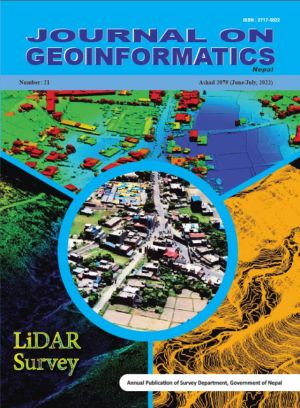Landslide Susceptibility Mapping Using Machine Learning Approach: A Case Study of Baglung District, Nepal
DOI:
https://doi.org/10.3126/njg.v21i1.50880Keywords:
Landslide Susceptibility, Random Forest, Frequency Ratio, Classification and Regression Tree, Area Under CurveAbstract
Assessment of Landslide Susceptibility Map (LSM) is crucial to the reduction of risk of the landslides. This paper focusses on modelling LSM using two different machine learning algorithms namely Random Forest (RF), and Classification and Regression Tree (CART). Ten landslide causative factors along with an inventory of landslides containing 89 recent and historic landslide points, and 90 randomly generated nonlandslide points were used to prepare a susceptibility map. The study area; Baglung district is located in the Gandaki province of Nepal, a highly landslide susceptible zone. Frequency ratio (FR) of each class of conditioning factors were calculated. FR values of landslide and non-landslide points were extracted from normalized FR classified raster. The extracted FR values of each point (landslide and non-landslide) was randomly split into training (70%) and testing (30%) samples which were used for training and testing the model. The performance of each algorithm was evaluated using receiver operating characteristics (ROC) curves in combination with area under the curve (AUC) and error matrix. The AUC results introduced success rate of 1 and 0.88 for RF and CART respectively. Also, the rates of prediction were 0.86 and 0.96 for RF and CART respectively. Similarly, RF and CART showed accuracy of 0.88 and 0.83 from confusion matrix. Therefore, the RF algorithm was superior to CART in identifying the regions at risk for future landslides in the study area. The outcomes of this study is useful and essential for the government, planners, researchers, decision makers and general landuse planners.




